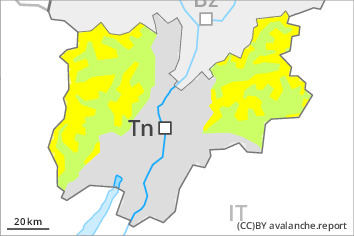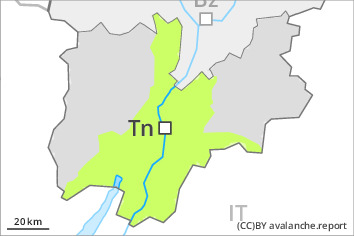
Danger level
 | 2400m |
|  |
|  | ||||
|  |
|  |

Weakly bonded old snow is to be evaluated with care and prudence.
In isolated cases avalanches can be triggered in the weakly bonded old snow and reach medium size. The avalanche prone locations are to be found in particular on steep west to north to east facing slopes above approximately 2400 m and on steep sunny slopes above approximately 2600 m. Caution is to be exercised at transitions from a shallow to a deep snowpack, and at transitions into gullies and bowls.
Older wind slabs are mostly small and can be released by large loads in particular, especially adjacent to ridgelines and in pass areas on very steep shady slopes above approximately 2600 m. The prevalence of the avalanche prone locations will increase with altitude.
As a consequence of warming during the day and solar radiation individual gliding avalanches and moist snow slides are possible, but they will be mostly small, especially on steep sunny slopes below approximately 2400 m.
Snowpack
dp.1: deep persistent weak layer
dp.10: springtime scenario
Towards its base, the snowpack is faceted, especially on steep west, north and east facing slopes above approximately 2000 m, as well as on steep sunny slopes at elevated altitudes.
The fresh and older wind slabs are lying on weak layers in particular on shady slopes at elevated altitudes.
Towards its surface, the snowpack is hard and its surface has a melt-freeze crust that is strong in many cases, especially below approximately 2400 m on steep sunny slopes. Sunshine and high temperatures will give rise as the day progresses to moistening of the snowpack at low and intermediate altitudes.
Tendency
The avalanche danger will persist.



